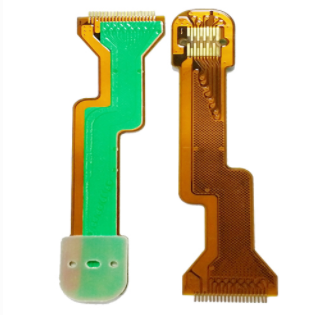Talking about the technological production process of the circuit board
Circuit boards are constantly changing with the progress of process technology. However, in principle, a complete PCB boardneeds to be printed through the printed circuit board, and then cut the circuit board, process the copper clad laminate, transfer the circuit board, corrosion, Drilling, pretreatment, and soldering can be energized after these production processes. The editor of Circuit board factory below and everyone will understand the production process of PCB circuit boards.
Print circuit board: Print out the drawn circuit board with transfer paper, pay attention to the sliding side facing you, generally print two circuit boards, that is, print two circuit boards on one sheet of paper. Choose the circuit board with the best printing effect among them.
Cut the copper clad laminate, and use the photosensitive board to make the whole process diagram of the circuit board. Copper clad laminate, that is, a circuit board covered with copper film on both sides, cut the copper clad laminate to the size of the circuit board, not too large to save materials.

Pretreatment of copper clad laminate: Use fine sandpaper to polish off the oxide layer on the surface of the copper clad laminate to ensure that the carbon powder on the thermal transfer paper can be firmly printed on the copper clad laminate when the circuit board is transferred. The polished standard is the board The surface is bright and there is no obvious stain.
Transfer circuit board: Cut the printed circuit board to a suitable size, and paste the printed circuit board side on the copper clad laminate. After alignment, put the copper clad laminate into the heat transfer machine, and ensure the transfer when placing it. The paper is not misaligned. Generally, after 2-3 times of transfer, the circuit board can be transferred firmly on the copper clad laminate. The heat transfer machine has been preheated in advance, and the temperature is set at 160-200 degrees Celsius. Due to the high temperature, pay attention to safety during operation!
Corrosion circuit board, reflow soldering machine: first check whether the circuit board transfer is complete, if there are a few places that have not been transferred well, you can use a black oil pen to repair. Then it can be corroded. When the exposed copper film on the circuit board is completely corroded, the circuit board is removed from the corrosive solution and cleaned, so that a circuit board is corroded. The composition of the corrosive solution is concentrated hydrochloric acid, concentrated hydrogen peroxide, and water in a ratio of 1:2:3. When preparing the corrosive solution, discharge water first, and then add concentrated hydrochloric acid and concentrated hydrogen peroxide. Be careful of splashing on the skin or clothes and wash them with clean water in time. Because of the use of strong corrosive solutions, you must pay attention to safety during operation!
Circuit board drilling: The circuit board is to insert electronic components, so it is necessary to drill the circuit board. Choose different drill pins according to the thickness of the electronic component pins. When using the drill to drill, the circuit board must be pressed firmly. The drill speed cannot be too slow. Please carefully watch the operator's operation.
Circuit board pretreatment: After drilling, use fine sandpaper to polish off the toner on the PCB board, and clean the circuit board with water. After the water dries, apply rosin to the side with the circuit. In order to speed up the solidification of the rosin, we use a hot air blower to heat the circuit board, and the rosin can solidify in only 2-3 minutes.
Soldering electronic components: After soldering the electronic components on the board, turn on the power.
The manufacturing process of the circuit board is introduced above. The current manufacturing process of the traditional single-layer, double-layer, and multi-layer high-precision circuit boards is similar.